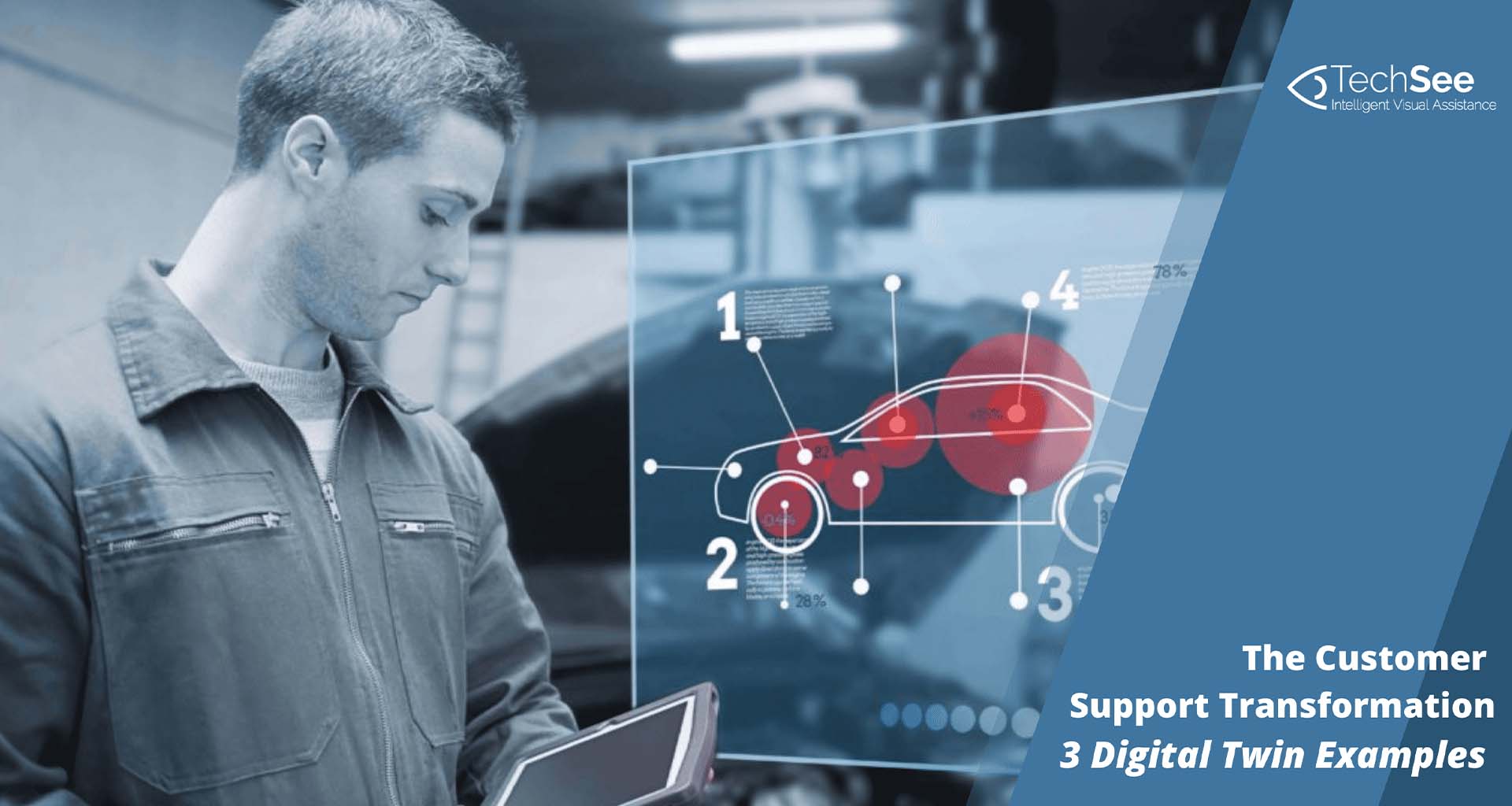Contents
What is Digital Twin Technology?
Digital Twin definition: a virtual replication of a physical object, with the two linked together dynamically. This enables insights to be learned and actions to be taken within the virtual environment that can be applied to the physical object, ultimately to meet business goals.
What are the Impacts of Digital Twin Technology Applications?
Digital twin technology applications impact a wide range of domains, from engineering to architecture to aerospace. Applying the digital twin model to the technical support domain will be truly transformative, with its ability to revolutionize the role of the on-site/field technician.
Field tech support has already begun merging the digital and physical worlds by utilizing immersive technologies, such as augmented reality (AR), mixed reality (MR) or virtual reality (VR), to manipulate real-life objects. In fact, field service organizations using AR can experience 20% to 30% improvement in core KPIs.
As more and more products become connected to the Internet of Things (IoT), this concept has the potential to have a greater impact in the day-to-day activities of maintenance and technical support.
Digital Twin Examples
Let’s take a screw as a hypothetical example of a digital twin. Imagine the advent of a smart sensitive screw that can identify when it is loose, and transmit this information to its digital twin. Once alerted, the digital twin (or the human behind it) can apply a rotation action virtually, causing the physical twin to rotate itself back into the correct position.
This dynamic process not only eliminates the need for screwdrivers, it also prevents accidents and further damage caused by loose screws, as well as the need for a field technician to be dispatched for periodic maintenance.
Once considered science fiction, the use of digital twins has shifted to reality much faster in recent years thanks to IoT growth, lowered costs, and technologies enabling digitization and virtualization, such as:
- artificial intelligence
- cognitive computing & computer vision, and
- AR & VR.
According to a report by marketsandmarkets, the digital twin market is estimated to grow to USD 48.2 billion by 2026, at a rate of CAGR 58.0%.
Technical Support in the age of Digital Twins
The use of digital twins has an almost unlimited potential to impact the technical support domain, both by enhancing consumer interactions with their technology and by empowering field support organizations. Here are some sample digital twin customer experience use cases:
Digital twin example 1: Predictive analytics and maintenance
The pairing of the virtual and physical worlds allows field service organizations or enterprise support centers to understand not only how products are performing, but also to predict how the products will likely perform in the future.
For example, detailed analysis on a digital twin may indicate the need for proactive maintenance, which then decreases the likelihood of damage to the system or product, and reduces the downtime that generally occurs when there is an actual malfunction.
Armed with this important data, organizations can enhance their decision-making abilities with new insights into the following:
- proactive service requirements
- product innovation
- lifecycle expectations, and even
- the development of new products/services for the future.
Digital twin example 2: Remote troubleshooting
With technician dispatches representing a significant expenditure to an organization, the ability to troubleshoot remotely is seen as a direct cost savings. Rather than traveling to interact with a faulty physical machine or device, the expert can interact with its digital twin from the comfort of his office, fixing the problem without leaving his desk.
The expert can also remotely transmit his knowledge by collaborating virtually with an on-site technician, or even a consumer, to deliver a visual explanation for faster issue resolution. For example, an expert on commercial copy machines can make use of digital twins to show the on-site technician exactly how to repair a certain model.
Digital twin example 3: Self-Service
Just as in our example of the smart screw, digital twin technology applications on the consumer mass market have the potential to be huge. There are endless possibilities of how digital twins can facilitate the activation, manipulation and repair of physical objects with consumers and technicians collaborating solely in the digital domain.
Consumers can access all the information about their devices in the digital domain, including interactive automated visual guidance to unbox, activate and troubleshoot their technology from the comfort of their homes. Using digital twin customer service to further boost the adoption of self-service follows the trend toward personalized service, and the shift away from a one-size-fits-all approach to customers.
Digital Twins By Industries
A digital twin customer experience is relevant to a wide range of use cases, as displayed in the following table.
| INDUSTRY | DIGITAL TWIN TECHNOLOGY APPLICATIONS |
|---|---|
| Digital twin retail use cases | Simulate a supply chain and thereby identify areas for optimization. |
| Digital twin for manufacturing | Improve manufacturing operations, in areas such as product design, process optimization, quality management and many other categories. |
| Digital twin healthcare use cases | Enhance medical care with modeling of the human body and digital tracking. |
| Digital twin automotive use cases | Used for product testing, to add manufacturing capacity, for employee training, predictive maintenance and sales. |
| Digital twin technology in mining | Achieve higher equipment efficiency and gain insights about processes. |
The Evolution of Digital Twins
Digital twins gain by being linked not only to corresponding physical objects but also networked to each other. This creates large data sets for each and every device, combination of devices, and the scenarios around the devices and their performances.
The use of cognitive computing will further increase the abilities of the digital twin. Technologies such as Natural Language Processing (NLP), machine learning and object/ visual recognition can further augment traditional field support capabilities, making a significant impact on the industry. In time, powered by AI deep learning, digital twins will continue optimizing their cognitive, digital and physical design and capabilities based on the data they’ll collect and experience they’ll gain.
Bridging Physical and Digital Realities
Digital twin technology applications are transformative. They strengthen the bond between physical and virtual objects, and therefore empower humans to have better control over their technology.
The use of digital twins will make a significant impact on the technical support domain: both by empowering field support organizations and enhancing consumer interactions with their technology. While the technology is still evolving in the short term, it promises to deliver significant value to enterprises, especially those using complex machinery.
Gartner predicted that organizations will initially implement digital twins, improve them over time via AI and immersive technologies, and eventually develop new economic and business models that deliver maximum value. Accenture has included digital twin examples in its top 5 strategic technology trends for 2021, suggesting a possible reason that businesses are finally figuring out how to scale digital twins across a range of projects, rather than as one-off.
Stay tuned.
Learn how AI is defining the future of self-service in this fun and informative infographic.






